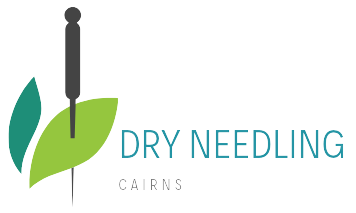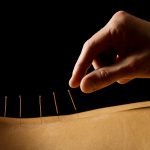Back pain during pregnancy cairns
Definition of dry needling. According to the American Physical Therapy Association, or APTA, dry needling is a skilled intervention that uses a thin filiform needle to penetrate the skin and stimulate underlying myofascial trigger points, muscular, and connective tissues for the management of neuromusculoskeletal and movement impairments.
Dry needling is a technique used to treat dysfunctions in skeletal muscle, fascia and connective tissue, and diminish persistent peripheral nociceptive input, and reduce or restore impairments of body structure and function, leading to improved activity and participation.
Dry Needling uses a small and fine needle (acupuncture needle) and may offer a lot of assistance in reducing pelvic pain (pelvic girdle pain) and lower back aching during pregnancy. It may also help alleviate any referred pain down the front of the leg / s during pregnancy. Hip bursitis is also a common complaint during pregnancy…as is soreness over the hip when lying on your side for periods of time during sleep. Dry needling and massage may help with all of these scenarios so that you have a more comfortable and bearable pregnancy.
Make an appointment today –
If you would like to check our available appointment times or make a booking please click on this link http://cairns-massage-cairns-acupuncture.au1.cliniko.com/bookings
or click on this link https://dryneedlingcairns.com.au and go to book online button.
or you can click the book online button on the www.cairnsmassage.net.au website.
or send a text to 0408 054 538.
Hormone changes. During pregnancy, your body makes a hormone called relaxin that allows ligaments in the pelvic area to relax and the joints to become looser in preparation for the birth process. The same hormone can cause ligaments that support the spine to loosen, leading to instability and pain. Muscle separation.
Pelvic pain during pregnancy
Pelvic pain or discomfort is common during pregnancy. After all, ligaments are stretching, hormone levels are changing, and organs are shifting around to make room for your growing uterus. … What are common causes of pelvic pain during pregnancy?
period pain cairns
Dry needling’s primarily focused on reducing pain and restoring function through the release of myofascial trigger points in the muscle.
What is a Myofascial Trigger Point?
A myofascial trigger point, also known as a knot in the muscle, is a group of muscle fibres that have shortened when activated but have not lengthened back to a relaxed state after use. A myofascial trigger point develops a sensitive nodule in the muscle (Simons, Travell & Simons, 1999). In addition to this nodule, the remainder of the muscle also tightens to compensate (Simons et al., 1999; Simons, 2002). This hypersensitivity occurs as the muscle fibres become so tight that they compress the capillaries and nerves that supply them (McPartland, 2004; Simons et al., 1999). As a result, the muscle cannot frequently move, obtain a fresh blood supply containing oxygen and nutrients, or flush out additional acidic chemicals (McPartland, 2004; Simons et al., 1999). The presence of a myofascial trigger point in a muscle can lead to discomfort with touch, movement and stretching, decreased joint motion, and even a temporary loss of coordination (Simons et al., 1999).
How Does Dry Needling Work?
Dry needling assists with decreasing local muscular pain and improve function by restoring a muscle’s natural ability to lengthen and shorten by releasing myofascial trigger points.
What Does Dry Needling Do?
When the delicate filament needle inserts into the centre of a myofascial trigger point, blood pools around the needle, triggering the contracted muscle fibres to relax. This reaction, in turn, leads to the decompression of the local blood and nerve supply. It also helps to provide those fibres with fresh oxygen and nutrients and flushing away any additional acidic chemicals.
What Causes a Myofascial Trigger Point?
A myofascial trigger point develops as part of the body’s protective response following:
- injury – the muscle will tighten in an attempt to reduce the severity of an injury;
- unexpected movements, e.g. descending a step that is lower than initially anticipated;
- quick movements, e.g. looking over your shoulder while driving;
- change in regular activity or muscle loading, e.g. an increase in the number or intensity of training sessions for sport;
- sustained postures e.g. prolonged sitting for work or study;
- nerve impingement – the muscle will tighten to protect the nerve;
- stress;
- illness (bacterial or viral);
- nutritional deficiencies, or;
- metabolic and endocrine conditions.
(Simons, et al., 1999)
When Is Dry Needling Treatment Recommended?
Dry needling can assist in treatment:
- to help release myofascial trigger points (muscle knots);
- to assist with pain management, and;
- to restore movement at a joint if inhibited by myofascial trigger points.
What Will You Feel During Dry Needling Treatment?
During a dry needling treatment, you may feel a mild sensation as the needle inserts and withdraws. Patients don’t report any discomfort during needle manipulation.
A brief muscle twitch may occur during a dry needling treatment. This twitch may happen when the needle directly stimulates a myofascial trigger point.
Where Does Dry Needling Fit Within Your Rehabilitation Program?
Dry needling is one of many techniques that your physiotherapist can utilise to assist with your rehabilitation. We combine dry needling with other physiotherapy techniques, including massage, manual therapy, and exercise prescription.
What are the Side Effects of Dry Needling?
Every form of treatment can carry an associated risk. Your physiotherapist can explain the risks and determine whether dry needling is suitable for you based on your injury and general health.
When dry needling occurs, single-use, sterile needles are always used and disposed of immediately after using a certified sharps container.
Is Dry Needling Safe?
Everybody is different and can respond differently to various treatment techniques, including dry needling. In addition to the benefits that dry needling can provide, some side effects may occur, including spotting or bruising, fainting, nausea, residual discomfort or even altered energy levels. However, these symptoms should last no longer than 24 to 48 hours after treatment.
Can You Exercise After Dry Needling?
We recommend avoiding strenuous or high impact activities immediately after dry needling to allow the body time to recover and maximise the treatment benefits.


